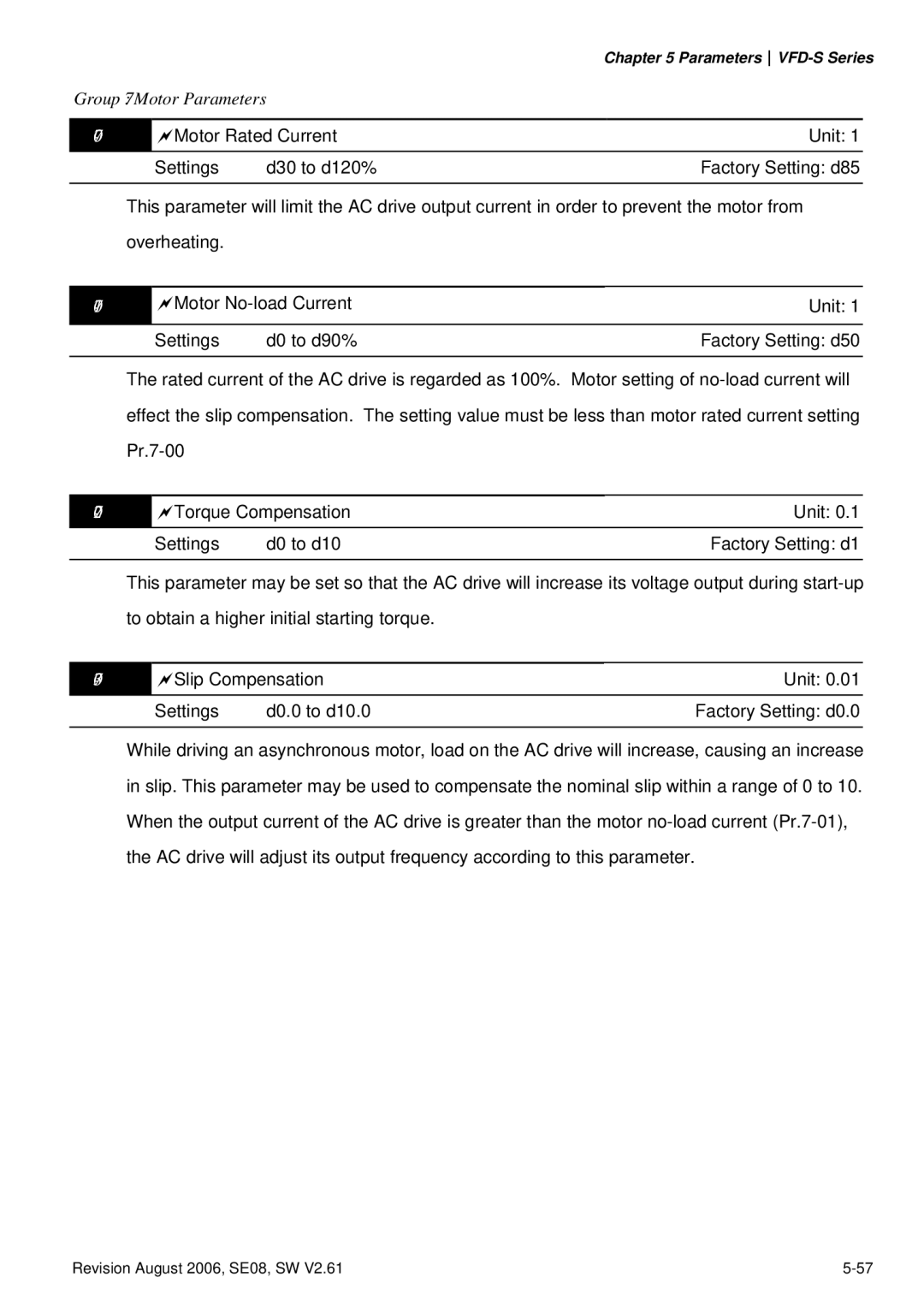VFD007S23A specifications
Delta Electronics VFD007S23A is a highly versatile and efficient variable frequency drive (VFD) designed to control AC motors and enhance energy savings in various industrial applications. Known for its robust performance, this drive provides precise motor control and has become a preferred choice in industries requiring reliable and efficient motor management.One of the main features of the VFD007S23A is its compact design, which makes it suitable for installations with limited space. With a compact size of only 200mm in height, 150mm in width, and 110mm in depth, it can be easily integrated into existing systems without needing extensive modifications.
The VFD supports a wide range of input voltages, accommodating 200V to 240V three-phase power supply. It is capable of delivering up to 0.75 kW of power, making it suitable for various applications including fans, pumps, and conveyors. Its adjustable frequency output allows for speed control, enhancing process efficiency and reducing energy consumption.
Equipped with advanced control technologies, the VFD007S23A offers both scalar and vector control modes. Scalar control is ideal for applications where precise speed control is not critical, while vector control provides superior torque performance, making it ideal for applications requiring high acceleration and deceleration. This feature allows users to achieve optimal performance regardless of the application requirements.
Incorporating features such as keypad programming, the VFD includes user-friendly interface allowing for easy setup and adjustments. The drive also supports various communication protocols, including Modbus RTU, enabling seamless integration into existing automation systems.
Another significant characteristic is its built-in protection features, including over-voltage, under-voltage, phase loss, and overload protection. These safety features ensure the durability and reliability of the device, extending its lifespan and minimizing downtime.
Additionally, the VFD007S23A is designed with energy efficiency in mind. It features an energy-saving mode that can reduce energy consumption significantly in variable load applications. By adjusting the motor speed according to the actual load demand, users can achieve lower operational costs while contributing to environmental sustainability.
In conclusion, Delta Electronics VFD007S23A stands out as an efficient and reliable choice for variable frequency drive applications. Its robust design, advanced control technologies, and energy-saving features make it ideal for a wide range of industrial applications, ensuring optimal performance and operational efficiency.

